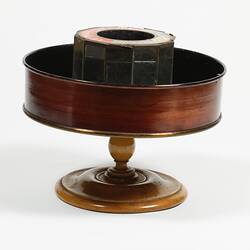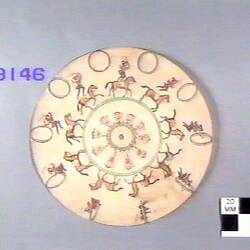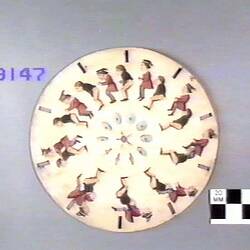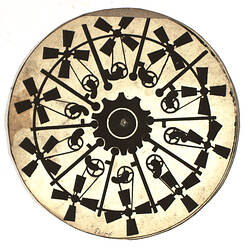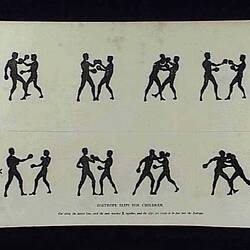The 18th and 19th centuries saw increasing scientific interest in exploring the relationship between vision and perception. At that time, it was generally believed that the brain processed the information received by the eyes, which were regarded only as windows to the world.
Optical illusions were seen by scientists as a way to study how the brain processed information. A direct result of the scientific work undertaken within this field was the creation of a number of philosophical/optical toys designed to trick the mind.
Many of these toys were based on the phenomenon of the persistence of vision, other toys used shadows for example. While this phenomenon had been described from antiquity, it was only in the 18th and 19th centuries that it was beginning to be understood. In 1831, natural philosopher Michael Faraday gave a succinct explanation:
"The eye has the power, as is well known, of retaining visual impressions for a sensible period of time; and in this way, recurring actions, made sufficiently near to each other, are perceptibly connected, and made to appear as a continuous impression" (Wade 2005, p.114).
Together with visual philosophical technologies such as panoramas and magic lantern shows, philosophical and optical toys were extremely popular. While they provided immense entertainment, they were also meant to educate. The instruments were often given Greek names to emphasise this more serious aspect of their creation. The Scottish inventor and scientist, Charles Wheatstone described the dual purpose of philosophical toys:
"The application of the principles of science to ornamental and amusing purposes contributes, in a great degree, to render them extensively popular; for the exhibition of striking experiments induces the observer to investigate their causes with additional interest, and enables him more permanently to remember their effects" (Wade 2004:108).
Wheatstone highlights the pervasive Victorian era concept of rational recreation, which advocated that amusement should not be enjoyed for its own sake but be tied to bettering the mind as well.
References:
Mannoni, L., W. Nekes & M. Warner, Eyes, Lies and Illusions, Hayward Gallery with Australian Centre for the Moving Image, London, 2006 [2004].
Morus, I.R., 'Seeing and Believing', Isis, 2006.
Wade, N.J., 'Philosophical Instruments and Toys: Optical Devices Extending the Art of Seeing', in Journal of the History of the Neurosciences 13(1):102-124.
Wade, N.J., Perception and Illusion: Historical Perspectives, Springer, New York, 2005.
More Information
-
Keywords
-
Authors
-
Article types

